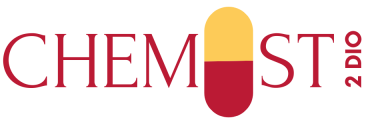
Telehealth platforms enable comprehensive, continuous care monitoring that maintains ongoing patient-provider connections between scheduled appointments while providing real-time health status tracking. Advanced monitoring capabilities track patient progress, medication responses, and health status changes through systematic digital surveillance. NextClinic exemplifies sophisticated technologies that detect health changes early, prevent medical complications, and optimize treatment effectiveness through continuous patient oversight. These monitoring systems create proactive healthcare delivery that identifies potential issues before they become serious medical problems.
Health tracking systems
Automated monitoring platforms integrate with wearable devices, home health equipment, and smartphone applications to collect continuous health data, including vital signs, activity levels, sleep patterns, and medication adherence rates. Real-time tracking provides healthcare providers with comprehensive patient health profiles that enable informed treatment decisions and early intervention when health indicators suggest potential complications or treatment adjustments through telehealth consultation that maintain patient autonomy and convenience. Symptom progression monitoring enables patients to report daily health changes, pain levels, and treatment responses through user-friendly digital interfaces that track patterns over time.
Chronic condition oversight
Diabetes management monitoring includes continuous glucose tracking, insulin administration monitoring, and dietary pattern analysis that enables optimal diabetes control through comprehensive data collection. Diabetes oversight includes blood sugar trend analysis, medication effectiveness assessment, and lifestyle factor correlation that supports evidence-based treatment adjustments and complication prevention. Cardiovascular monitoring systems track blood pressure patterns, heart rate variability, and activity tolerance through home monitoring devices that provide healthcare providers with detailed cardiovascular health assessments.
Mental health monitoring
Mood tracking applications enable patients to document emotional states, stress levels, and mental health symptoms through daily assessments that identify patterns and treatment effectiveness indicators. Mental health monitoring includes depression screening, anxiety assessment, and therapeutic response evaluation that supports comprehensive psychiatric care through objective measurement tools. Behavioural pattern analysis utilises patient-reported data and digital activity monitoring to identify concerning changes in sleep patterns, social engagement, and daily functioning that may indicate mental health deterioration.
Recovery progress tracking
Post-treatment monitoring systems track healing progress, recovery milestones, and functional improvement through systematic assessment tools that measure treatment outcomes objectively. Recovery tracking includes pain level monitoring, mobility assessment, and quality of life measurement that demonstrate treatment effectiveness while identifying areas requiring additional intervention or support.
- Systematic pain level assessment with visual analogue scales and functional impact measurement
- Mobility and functional capacity tracking through objective assessment tools and patient reporting
- Quality of life measurement using validated assessment instruments and progress indicators
- Treatment goal achievement monitoring with milestone tracking and outcome measurement
- Recovery timeline assessment with expected progress comparisons and adjustment recommendations
Rehabilitation adherence monitoring tracks patient compliance with physical therapy exercises, lifestyle modifications, and recovery protocols through digital tracking tools and patient self-reporting systems. Adherence monitoring supports optimal recovery outcomes while identifying barriers to treatment compliance that may require intervention or treatment plan modification.
Early warning systems
Predictive analytics utilises collected health data to identify patterns that suggest potential health deterioration, medication problems, or treatment complications before they become serious medical issues. Early warning systems include risk assessment algorithms, trend analysis, and automated alert generation that enable proactive intervention while preventing emergencies through timely medical response. Emergency protocol activation systems recognise concerning health changes that require immediate medical attention and automatically notify healthcare providers, emergency contacts, and appropriate medical services.
Continuous care monitoring through telehealth consultations creates proactive healthcare delivery that maintains ongoing patient oversight while enabling early intervention and treatment optimisation. These monitoring capabilities enable confident patient engagement with remote healthcare while ensuring optimal therapeutic outcomes through systematic, technology-enhanced medical supervision.


